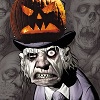I used the technique where you put the oak runners in the miters (with cardboard shims to make them tight). Glued on the sled. Looks good, but it doesn't slide easily. Feels very tight. D'oh!
Do I sand sharp edges along the oak runners? Do I shellac and wax the bottom?
Thanks in advance! This forum really helps me.
Matt




 Reply With Quote
Reply With Quote











